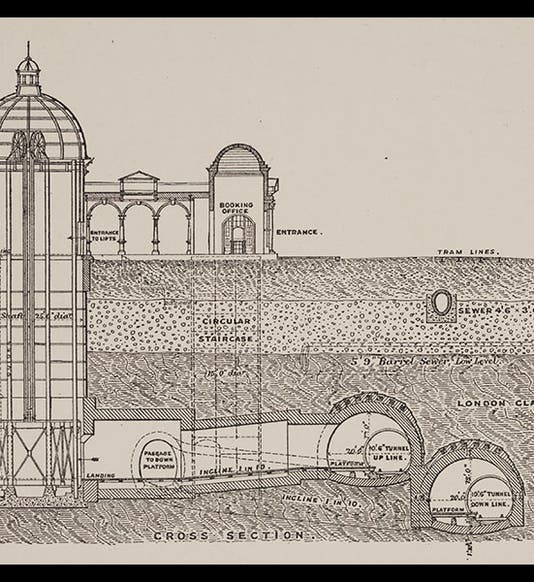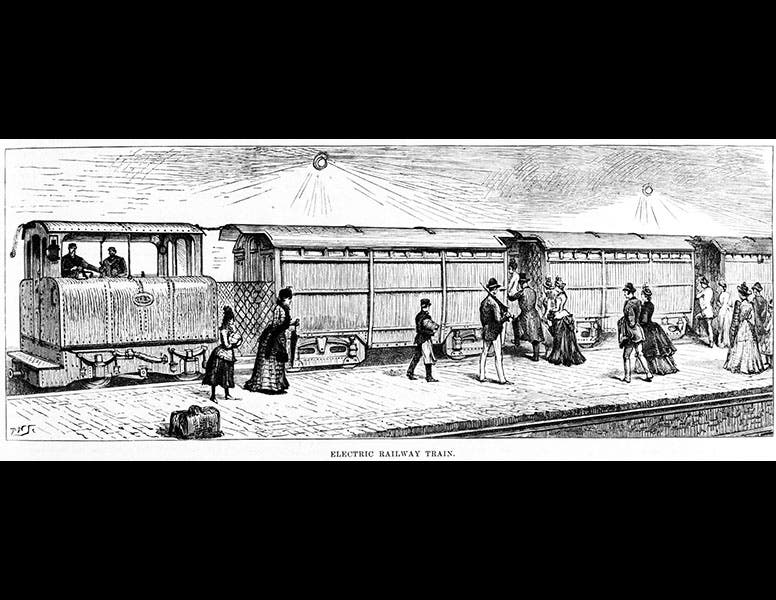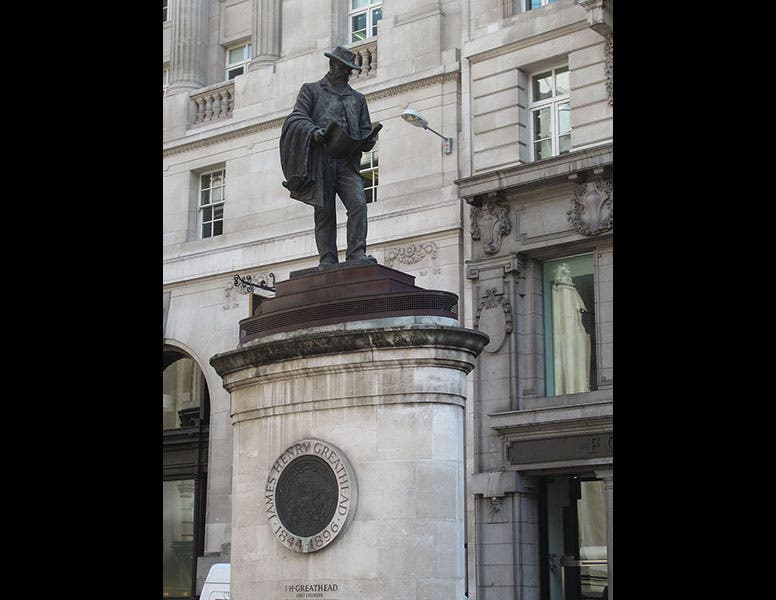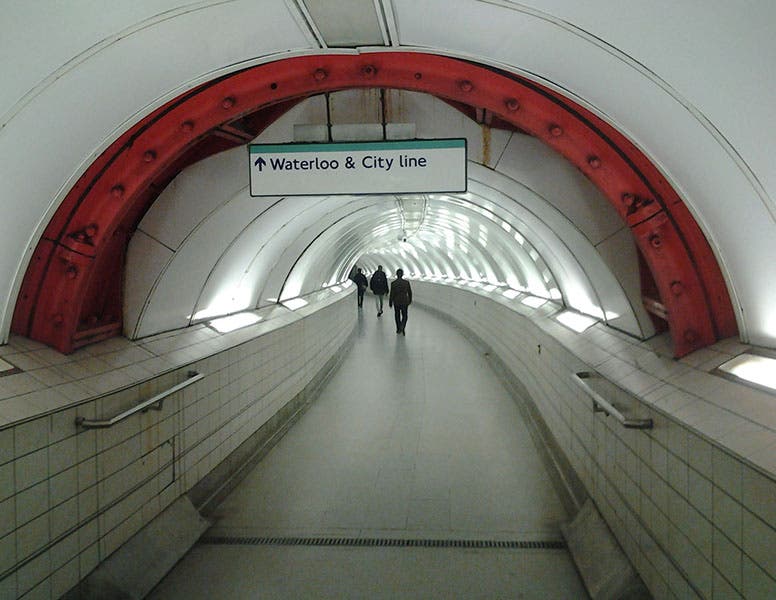Scientist of the Day - James Henry Greathead

Linda Hall Library

Linda Hall Library
James Henry Greathead, a British civil engineer, was born Aug. 6, 1844 (second image). Greathead, working with Peter Barlow, built the first subway tunnel under the Thames (and the second Thames tunnel ever), completing the Tower Subway in 1870. To accomplish this, he utilized a tunneling shield of his own design that was different from the first tunneling shield, used by Marc Isambard Brunel in building the first Thames tunnel from 1825 to 1843 (we featured Brunel and the Thames tunnel four years ago, back when the Scientist of the Day was running only on Tumblr). Greathead's shield was cylindrical, rather than square as Brunel's had been. Workers entered the shield through a small door, shoveled out dirt behind the shield, and then the shield was jacked forward by screws, and cast iron segments were bolted in place behind it as it inched forward. The result was a "tube," the first tube. Barlow had invented and patented a similar shield in 1868, but it was never built, and it appears Greathead was unaware of the patent and designed his independently. The first Greathead shield was only 7.25 feet across, so the resulting tube was small and the cars that would fit through it even smaller (third image). The train of cars was pulled though the tunnel by a cable connected to a stationary engine on the bank.
In 1886, Greathead embarked on constructing another subway tunnel, this one from "the Bank" in Cornhill under the Thames to Southwark (subsequently called the City & South London Railway). The shield used for this (of which no image survives, surprisingly) was larger, so the cars were larger and more comfortable too, and they were powered by an electric locomotive. Two tunnels were built, one for the "up" train and one for the "down", and they extended just over 3 miles between end stations. We see above a section of the subway at the City end, showing how passengers descended via spiral stairs or a lift to the underground station (first image), as well as a drawing of a City & South London train, from the Illustrated London News of 1890 (fourth image).
Greathead is a very popular figure in London; there is a statue of him outside the Royal Exchange in Cornhill, at the City end of the City & South London line (fifth image). A portion of a Greathead shield used on the City & South London Railway was discovered in an unused portion of the London Underground and is now on public view; anyone who travels on the Waterloo & City line passes beneath it (sixth image).
The first two images above are from the comprehensive book by W.C. Copperthwaite, Tunnel Shields and the Use of Compressed Air in Subaqueous Works (1912).
Dr. William B. Ashworth, Jr., Consultant for the History of Science, Linda Hall Library and Associate Professor, Department of History, University of Missouri-Kansas City. Comments or corrections are welcome; please direct to ashworthw@umkc.edu.










